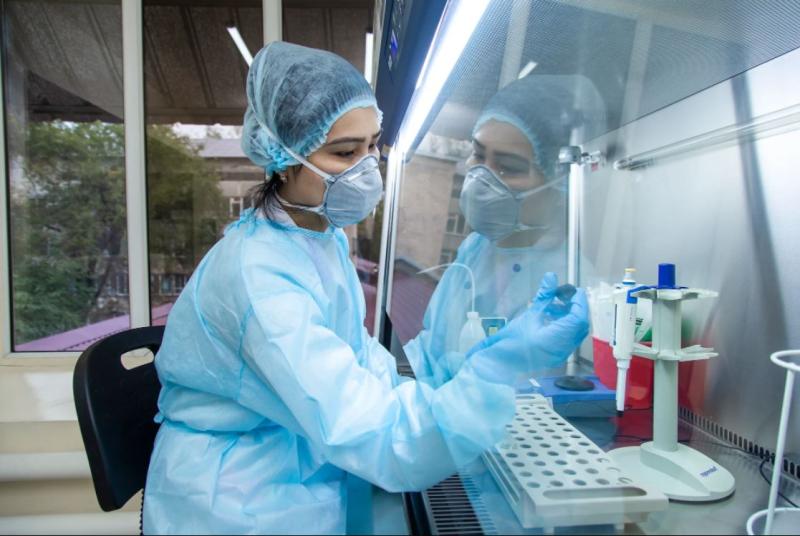Where We Work
See our interactive map


A TB laboratory specialist at the National Reference Laboratory in Kazakhstan performs drug susceptibility testing to ensure physicians prescribe the most effective, appropriate TB treatment for patients. Photo: USAID/Abt Associates
Start with really embracing localization and putting local actors, including allied health professionals, in the lead.
This post was originally published on the Frontline Health Workers Coalition Blog during the UN General Assembly in September 2023.
As global health leaders convene in New York for three separate high-level UN meetings—on the fight against tuberculosis (TB); universal health coverage (UHC); and pandemic preparedness, prevention, and response—there is one critical element required to complete all these agendas, and that is a robust and resilient health workforce. Without sufficient, well-protected, well-trained, and supported health workers in the right places to respond to the health needs of vulnerable populations, the TB epidemic will rage on, UHC will remain an elusive goal, and countries will be unprepared to respond to the next epidemic or climate-related catastrophe.
There is enormous return on investment in the health workforce, but the critical role of allied health professionals is often left out of this conversation. While clinical health workers remain the backbone of high-quality services, equally important to the fight against TB are the logisticians, who ensure supply chains effectively distribute medicines and supplies where they are needed, and laboratory professionals, who ensure rapid and correct diagnosis of TB and other diseases. Universal health coverage cannot be achieved without economists and financial management professionals who ensure budgets are allocated to priority needs, especially those at the primary health care level. And early warning systems are not effective without trained epidemiologists to review data and note anomalies that need response.
Allied professionals across the system enable the critical work of clinical professionals, as do clear-eyed managers and supervisors who constantly adapt and adjust systems and resources to support staff at every level and function within the health system. And there are countless other professionals who provide social support to families, assist people with disabilities, and otherwise support a people-centered and inclusive health system.
The siloed approach to global health... treats health professionals as a commodity to be used by a program—not as people who are part of a community and want to see better health for their countries overall.
Each of these professionals needs to be recognized for their role in achieving global health and broader Sustainable Development Goals; they need the structure and resources to fulfill their roles according to the context in which they work and the space to innovate and generate solutions uniquely calibrated to their local context. This means understanding that their roles and functions are not specific to one disease or one outcome and that truly supporting health workers means supporting their roles in the system to create more effective outcomes for all. The siloed approach to global health that assumes achieving specific outcomes requires a direct link between actions and outcomes treats health professionals as a commodity to be used by a program—not as people who are part of a community and want to see better health for their countries overall.
Here's how to engage and support the full health workforce needed to achieve the objectives of UNGA’s high-level meetings:
Lately, localization is a constant topic in international development and global health, with much focus on the transfer of funds directly to local organizations. Truly embracing localization, though, means putting local actors, such as allied health professionals and others responsible for the full functioning of critical health systems, in the lead. While the international community has generated research and evidence around what needs to be done to achieve UHC, TB, and pandemic preparedness objectives, we have to recognize that externally-imposed ideas of how to implement evidence-based approaches often fall short.
To truly let the local health workforce lead, the global development community needs to have the humility to trust local solutions. International actors should take a step back and view their role as largely focused on “what” works in terms of evidence-based technical solutions—while giving local actors the space to iterate on how best to implement these in local contexts.
For the global health community, having the humility to recognize the value of locally-generated solutions creates more collaboration and partnership among programs. Rather than each program fearing its issue will be diluted if not solely controlled within their community, they should enter global discussions with a clear-eyed understanding of each program's unique contributions. They should look to understand how these unique contributions can complement, or be complemented, by those of other programs—without competing for resources or “leadership” within the space. That might just pave the way for enhanced results through genuine collaboration.
Get the latest updates from the blog and eNews




